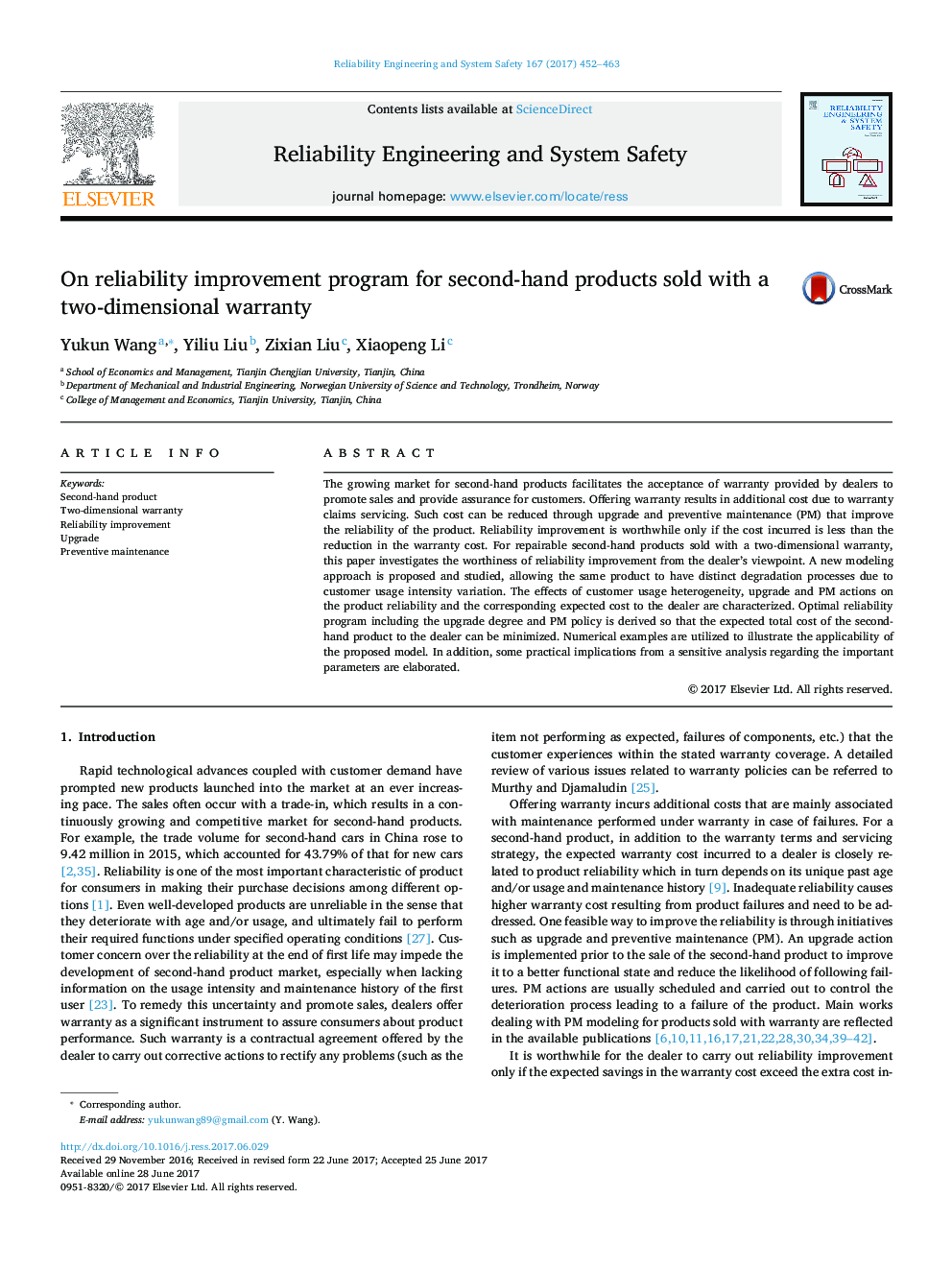| Article ID | Journal | Published Year | Pages | File Type |
|---|---|---|---|---|
| 5019499 | Reliability Engineering & System Safety | 2017 | 12 Pages |
Abstract
The growing market for second-hand products facilitates the acceptance of warranty provided by dealers to promote sales and provide assurance for customers. Offering warranty results in additional cost due to warranty claims servicing. Such cost can be reduced through upgrade and preventive maintenance (PM) that improve the reliability of the product. Reliability improvement is worthwhile only if the cost incurred is less than the reduction in the warranty cost. For repairable second-hand products sold with a two-dimensional warranty, this paper investigates the worthiness of reliability improvement from the dealer's viewpoint. A new modeling approach is proposed and studied, allowing the same product to have distinct degradation processes due to customer usage intensity variation. The effects of customer usage heterogeneity, upgrade and PM actions on the product reliability and the corresponding expected cost to the dealer are characterized. Optimal reliability program including the upgrade degree and PM policy is derived so that the expected total cost of the second-hand product to the dealer can be minimized. Numerical examples are utilized to illustrate the applicability of the proposed model. In addition, some practical implications from a sensitive analysis regarding the important parameters are elaborated.
Related Topics
Physical Sciences and Engineering
Engineering
Mechanical Engineering
Authors
Yukun Wang, Yiliu Liu, Zixian Liu, Xiaopeng Li,
